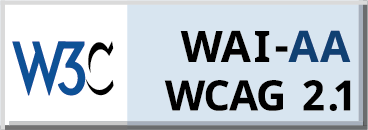Are you confident your AI systems comply with the latest European regulations? As AI becomes central to business operations, the EU AI Act 2025 introduces a comprehensive framework to govern AI use, ensuring ethical deployment and protection of personal data.
This blog explains the EU AI Act, its scope, obligations, and practical compliance steps, showing how AI governance with consent management reduces legal and financial risks. Let’s explore this together!
The EU AI Act is the first comprehensive legal framework for AI in the European Union. It establishes rules for developing, deploying, and monitoring AI systems, with a focus on user safety, transparency, and accountability.
AI systems are categorised by risk to help businesses prioritise compliance measures. Here are the main classifications:
Understanding these categories allows businesses to implement appropriate safeguards and ensure regulatory alignment.
The legislation applies to AI providers, deployers, importers, and general-purpose AI (GPAI) systems. Systems processing personal data must also comply with GDPR consent rules, making alignment with a Consent Management Platform (CMP) essential for tracking and managing user consent in relevant processes.
Businesses across industries face increased scrutiny as AI adoption grows. Compliance is crucial to avoid fines, reputational damage, and operational disruptions. Similar to GDPR, the AI Act emphasises transparency, user consent, and accountability.
Organisations handling personal or sensitive data must implement governance structures, technical measures, and robust documentation. Integrating AI governance with consent management ensures both regulatory compliance and user trust.
The AI Act entered into force in mid-2024, with phased enforcement:
National authorities enforce the Act similarly to GDPR regulators, with fines up to 6% of global annual turnover depending on violations.
Understanding AI risk categories helps businesses prioritise compliance efforts and implement safeguards effectively. Here’s how the Act breaks down different risk levels:
Banned systems include AI for social scoring or subliminal manipulation. Immediate regulatory action applies to violations.
Recruitment algorithms, credit scoring tools, and biometric ID systems require risk management, technical testing, and post-market monitoring. Compliance ensures lawful processing and aligns AI data usage with user consent.
Chatbots and deepfakes require labelling to inform users they are interacting with AI. Leveraging a CMP ensures transparency and consent are managed effectively in these scenarios.
To effectively meet AI Act requirements, businesses must understand core responsibilities that ensure compliance, mitigate risks, and protect user data.
Assign dedicated AI owners, implement detailed risk management protocols, and provide comprehensive staff training to ensure everyone understands compliance responsibilities, fostering accountability and consistent adherence across the organisation.
Maintain high-quality datasets, perform thorough bias testing, and validate models rigorously. Systems processing personal data must also track and document valid consent, ensuring robust, lawful, and ethical AI operation.
Keep detailed technical files, maintain comprehensive audit logs, and perform regular post-market monitoring. Extending existing GDPR consent records to AI systems streamlines compliance and supports transparency and accountability.
Implement human-in-the-loop processes to supervise AI outputs and provide clear labelling, ensuring transparency, user understanding, and accountability in automated decision-making.
Ensure all contracts with third-party vendors include AI Act compliance requirements and enforce proper consent management, reducing risk across the supply chain and maintaining regulatory alignment.
Before implementing AI compliance measures, businesses should understand the full scope and sequence of actions required for effective governance. Here’s a practical checklist:
Teams involved: Legal, data science, procurement, and security for comprehensive compliance.
Following these steps ensures coordinated efforts across teams, reinforcing accountability and reducing compliance risks.
Understanding operational impacts of AI compliance helps businesses integrate governance, consent, and monitoring into workflows effectively, ensuring smoother adoption and risk mitigation.
AI compliance affects design, development, testing, deployment, and monitoring stages. Early integration of governance practices and consent management reduces operational risks, ensures ethical data use, and aligns with regulatory expectations, fostering trust and accountability.
Since most searches occur on mobile, banners should be responsive and designed to avoid pushing content down. Reserving space in advance prevents layout instability.
The EU AI Act enforces strict penalties to ensure accountability. Non-compliance may result in fines reaching up to 6% of a company’s global annual turnover, emphasising the seriousness of regulatory obligations.
Penalties vary depending on violation severity. Serious breaches like ignoring high-risk AI obligations or using banned practices can trigger maximum fines, while procedural failures such as missing documentation can still lead to significant financial and operational consequences.
The model mirrors GDPR’s enforcement framework, highlighting that AI regulation is not optional. Businesses must prioritise compliance strategies now to avoid fines, safeguard their reputation, and ensure long-term trust in AI systems.
The EU AI Act 2025 underscores transparency, consent, and accountability as essential for AI adoption. Businesses aligning AI governance with a CMP not only remain compliant but also build long-term user trust.
Start with an AI system inventory and a risk scan, and continue monitoring evolving regulations to maintain readiness for future AI developments.
Simplify AI governance and consent management with Seers Ai. Protect your business from regulatory risks, ensure transparency, and streamline compliance under the EU AI Act 2025; all in a few smart clicks.
Watch A Demo Start Free TodayNon-compliance can result in fines up to 6% of a company’s global annual turnover, depending on severity. National authorities can impose restrictions on AI system deployment, mandate corrective measures, and in some cases, suspend or ban high-risk AI operations until compliance is achieved.
The Act categorises AI into three levels: banned AI (unacceptable risks like social scoring), high-risk AI (critical sectors such as recruitment or credit scoring requiring strict governance), and limited-risk AI (systems requiring transparency, such as chatbots or deepfakes).
High-risk AI systems must implement risk management, maintain detailed technical documentation, conduct rigorous testing, ensure human oversight, and perform ongoing monitoring. Organisations must also verify that personal data processing complies with GDPR consent requirements.
Yes, any AI system offered or used within the EU falls under the Act, even if the provider is located outside the EU. Non-EU companies must meet compliance requirements if their AI affects EU users or processes EU data.
Transparency measures require that users be informed when interacting with AI systems. Limited-risk AI, such as chatbots, must clearly label AI outputs and disclose data usage practices, ensuring users understand automated decision-making and their rights.
Companies should classify AI systems by risk, assign accountable AI owners, implement governance protocols, maintain technical documentation, conduct bias and safety testing, integrate human oversight, and monitor evolving regulatory guidelines to ensure ongoing compliance and operational readiness.
 Rimsha Zafar
Rimsha ZafarRimsha is a Senior Content Writer at Seers AI with over 5 years of experience in advanced technologies and AI-driven tools. Her expertise as a research analyst shapes clear, thoughtful insights into responsible data use, trust, and future-facing technologies.
Is your website cookie compliant?
Take our Free Cookie Audit and find out
United Kingdom
24 Holborn Viaduct
London, EC1A 2BN

Seers Group © 2025 All Rights Reserved
Terms of use | Privacy policy | Cookie Policy | Sitemap | Do Not Sell or Share My Personal Information.
Let Seers AI automate your compliance setup in seconds